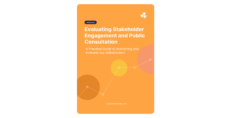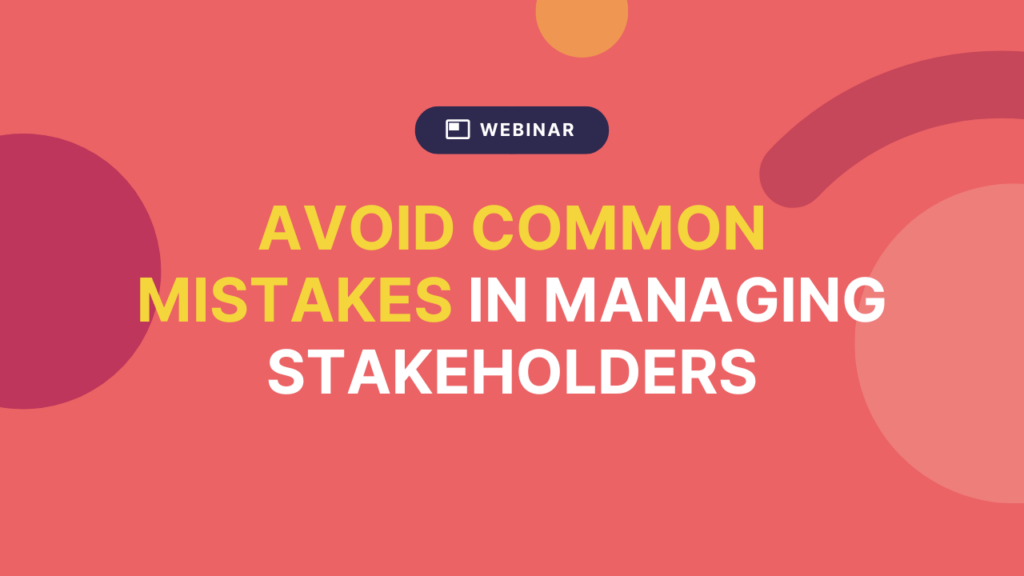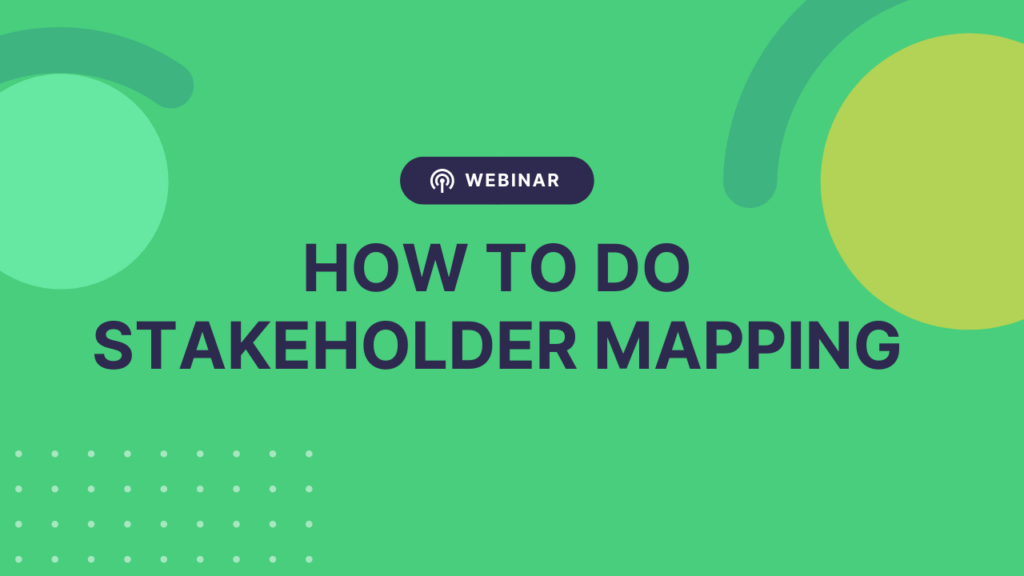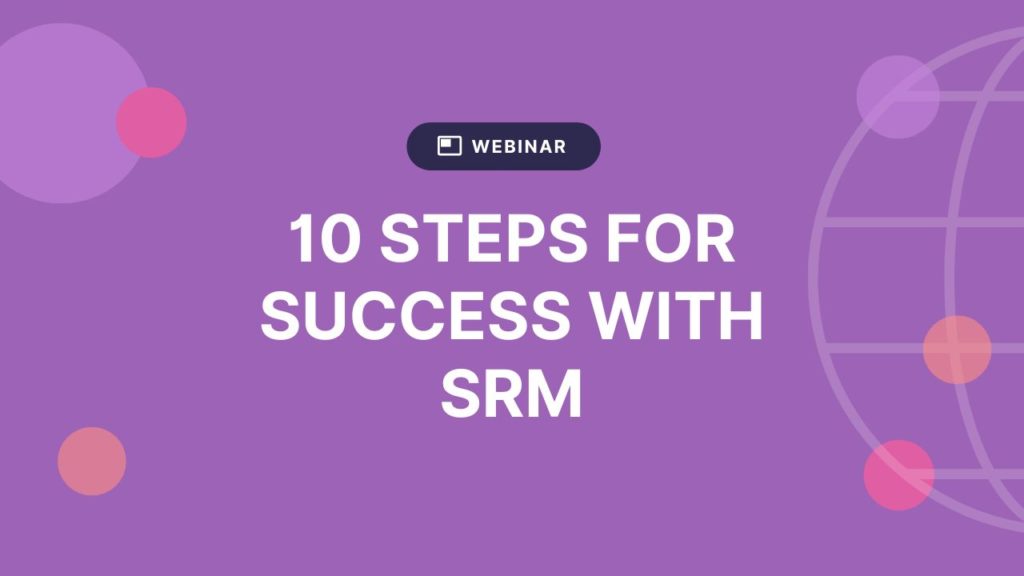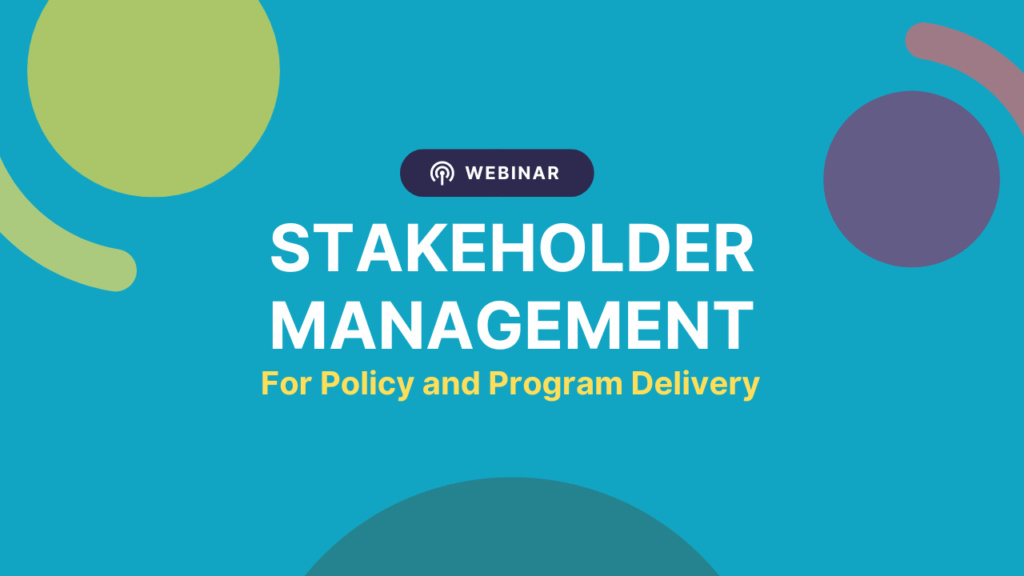Business Relationship Management for Nonprofits

Why manage business relationships for your nonprofit organization? What kinds of relationships should you pay attention to, and how do you manage them efficiently?
There’s plenty of information out there on relationship management for nonprofits — but most of it is focused on donor relationships.
The thing is, for many nonprofits, their corporate partners, project delivery partners, government groups, and other stakeholders are at least as important to their success as donors. Managing these relationships can unlock value in the form of revenue, knowledge, reputation, support, and more. And most importantly, play a major important role in helping to achieve your mission, whether that’s advocacy, policy change, or service delivery.
So, let’s explore the business side of nonprofit relationships, starting with some basic definitions.
What is Business Relationship Management?
Business relationship management refers to the practice of strategically managing and nurturing business relationships in order to achieve your goals. Other terms with similar applications include corporate relationship management, partner relationship management, and stakeholder relationship management.
As a nonprofit, managing certain business relationships can help you achieve goals like generating revenue, broadening the scope of work, influencing social or environmental change, adding new volunteers, increasing awareness of an issue, reducing risk, and more.
Generally, the process of business relationship management involves mapping out:
- The organizations you’re involved in (or what relationships you should be managing)
- What issues they care about
- What impact they might have on your work
- What impact your work might have on them
- What risks are involved in the relationship
- Potential for shared knowledge and resources
- Collaboration opportunities
- How you can best keep them informed and involved
What Isn’t Business Relationship Management?
Business relationship management does not include customer relationship management, or (in the case of nonprofits), donor relationships. Generally speaking, nonprofit organizations have a specific communication and relationship management strategy for these types of stakeholders that is focused on retaining their support and increasing donations.
It also doesn’t typically include beneficiaries — the community members or groups on the receiving end of the goods or services provided by the nonprofit. Where relevant, nonprofits might have a separate communication and engagement strategy for these stakeholders.
(9) Reasons Nonprofits Should Strategically Manage Business Relationships

We’ve already touched on some of the goals nonprofits can work towards through managing business relationships, but let’s get a little more specific.
1. Add Value
Strong relationships with corporate partners, other nonprofits, government groups, policy makers, and other groups can add value to your nonprofit. More than just monetary value, these relationships can contribute knowledge, support, connections, influence, and other resources.
2. Share Knowledge and Contacts
One reason that nonprofits fail (especially international development NGOs) is due to a lack (and mismanagement) of social links and knowledge resources, leading to poor outcomes as these organizations struggle to reach target populations. Engaging corporate stakeholders with pre-existing knowledge and contacts can help to improve outcomes, build in a culture of accountability and respect, and increase resilience.
3. Manage Complexity
Most nonprofits interact with a range of different organizations — each with different roles, challenges, and goals. Identifying these attributes on paper (or in a system) and categorizing them into groups can reduce overwhelm and improve efficiency.
4. Improve collaboration
Many nonprofit organizations collaborate with other partners — including for-profit businesses and other nonprofits. Relationship management is critical to the success of these partnerships, as it can help both sides ensure the right fit, establish trust, communicate expectations, and manage any shared tasks or responsibilities.
5. Identify and Respond to Issues
A lot of the time, when problems come up, they’re linked to stakeholder relationships. Keeping a closer eye on these relationships can help you identify issues (like negative sentiment or dissatisfied partners) earlier and take action to minimize the impact.
6. Be Accountable
Some partners will require regular communication from your nonprofit, like activity updates and financial reports. They want to know that you’re operating effectively, using their funding (or other resources) responsibly, and meeting their requirements as a nonprofit partner.
7. Be Seen as Effective
External evaluators are more likely to see a nonprofit organization as effective if they consistently build relationships across numerous stakeholder groups and report on their actions, in line with their mission and core values.
8. Manage Reputations
Strategically maintaining relationships and communication with certain groups (especially the media) can play an important role in reputation, advocacy, and crisis management. Not only that, but closely managing relationships with corporate partners can help you identify (and influence) business practices that may not align with your values — ideally, before they reflect badly on your organization.
9. Support Advocacy
For nonprofits that aim to influence policy and serve as a voice for their constituents, building relationships with policymakers can help to increase the likelihood of success. Managing this kind of relationship could involve task sharing, networking, two-way communication, and assurances.
Types of Nonprofit Business Relationships
The definition of nonprofits extends to a diverse range of organizations, and may include charities, religious groups, community groups, industry associations, employee groups, social & recreation clubs, aged care providers, animal welfare societies, arts & cultural groups, environmental protection groups, and many more.
Equally, there’s a great deal of variety in the types of business relationships a nonprofit may need to manage. But in general, they fall under the following five categories:
Corporate Partners
Typically, these are businesses that act as major sponsors or sources of funding. They may have a workplace giving program, offer cash and in-kind donations, or encourage skill-based volunteering among their employees. Or they may partner with your nonprofit on marketing campaigns in order to increase visibility for both brands, improve reputation, and raise funds through sales (e.g. $1 donated from every purchase).
Project Partners
Project partners can include any individuals and organizations that work closely with you to deliver an initiative and achieve your desired outcomes. They may share tasks, useful knowledge, networks, physical resources, or social capital. Project partners may include researchers, universities, religious groups, community groups, suppliers, volunteers, and more.
Media
Media relationships may include journalists and media organizations that are interested in your nonprofit or relevant issues — and are, therefore, more likely to report on your organization or initiatives. These relationships can be helpful for reputation management, crisis management, advocacy, reaching more supporters, and drawing positive attention to the work you’re doing.
Government Groups
Many nonprofits are impacted by government, often relying on government sources for a significant portion of funding, and (in many cases) delivering government programs and services. Managing relationships with key people inside government departments can help your nonprofit ensure that these groups understand what you do, why it matters, and how to best support it. Depending on the kind of work you do, you may need to manage relationships with the department of health, education, communities & housing, employment & training, environmental, defence, transport, and infrastructure — among many others.
Policy Makers & Regulators
Often within government itself, you’ll also find policymakers or officials who are responsible for making decisions or recommendations that guide policy. These relationships can be a powerful asset for your advocacy work, as they can help you keep track of legislation, as well as facilitate your feedback (and influence) on proposed policy and legislation changes.
Why Business Relationships Need a Different Approach
Compared to managing relationships with donors or your wider audience, business partners and corporate contacts need different things from your nonprofit (and you need different things from them).
Their impact is often more substantial than an individual donor or supporter. Therefore, investing more time into managing business relationships can pay off and allow you to achieve your goals. Of course, the inverse is also true — neglecting or mismanaging these relationships can have a much greater negative impact than the loss of a few donors.
Corporate and business partners also tend to have more complex and varied interests. And a lot of the time, nonprofits need to consider the competing interests of multiple stakeholders, alongside their own mission and objectives.
Finally, each partner or group can benefit from a tailored approach in order to build a strong relationship that supports collaboration, trust, and knowledge-sharing. For example, some stakeholders still rely heavily on face-to-face and phone communication, rather than emerging forms of communication. And some might prefer to hear from you on a weekly basis, while others may only want a monthly or quarterly update.
Business Relationship Management Tools for Nonprofits
As a nonprofit, it can be hard to know what tools are best suited to managing partnerships and business relationships. Especially if (like many other nonprofits) you’re concerned about managing your budget, working effectively, and implementing newer technology.
We’ve put together a brief summary of the most popular software options — and their pros and cons when it comes to managing nonprofit business relationships.
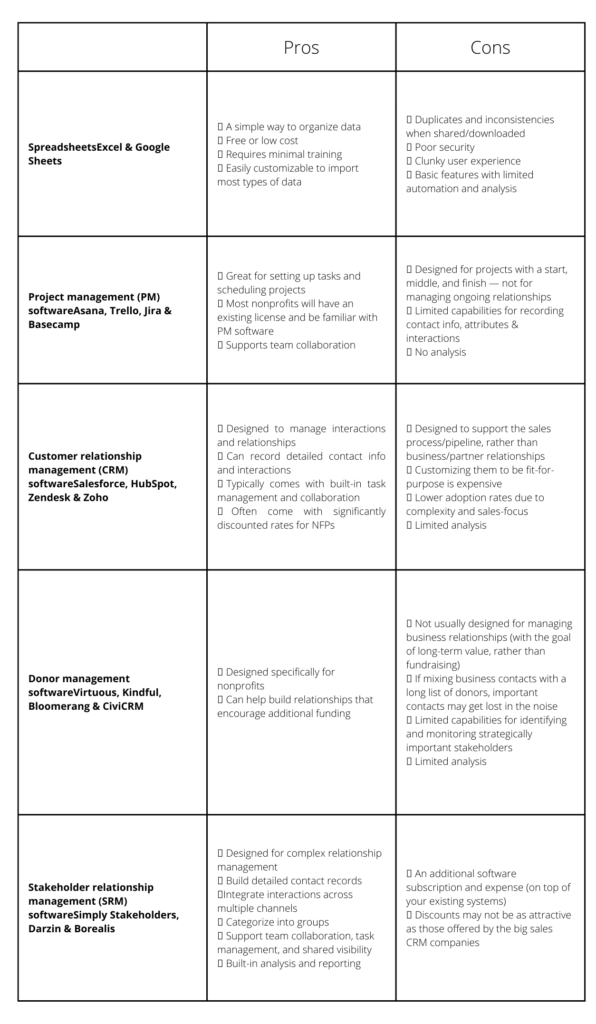
We explore some of these systems in more detail in our blog on corporate relationship management.
But what it really comes down to is this: which does your relationship management process most closely resemble…
- Data management?
- Project and task management?
- Sales and customer management?
- Fundraising and donor management?
- Or stakeholder management?
For most nonprofits that take relationship management seriously, it’ll almost certainly be the latter.
It probably won’t surprise you that we have a strong preference for Stakeholder Relationship Management Software. While each approach has its pros and cons, the features and functionality you get with an SRM can unlock greater efficiency and more effective relationship management. And for nonprofits with complex, high stakes business relationships, the investment can quickly pay off.
Manage Your Relationships With Simply Stakeholders
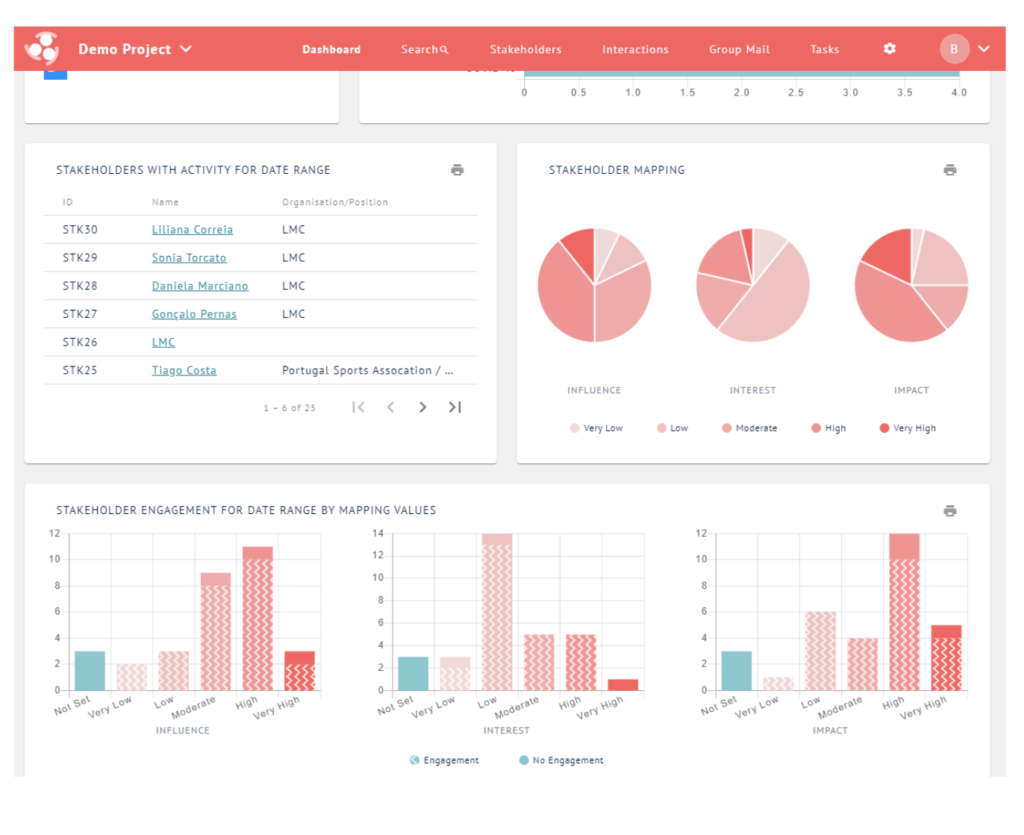
Ready to explore software designed to simplify and manage complex business relationships for your nonprofit?
Simply Stakeholders is ideal for nonprofits that work with multiple corporate partners, manage long-term relationships, and need a single source of truth for their team. Use our stakeholder software to access flexible contact records, stakeholder analysis, stakeholder mapping, sentiment tracking, interactions, tasks, reporting, and much more.
Take a look at how our stakeholder software works or contact us to request a demo.
















